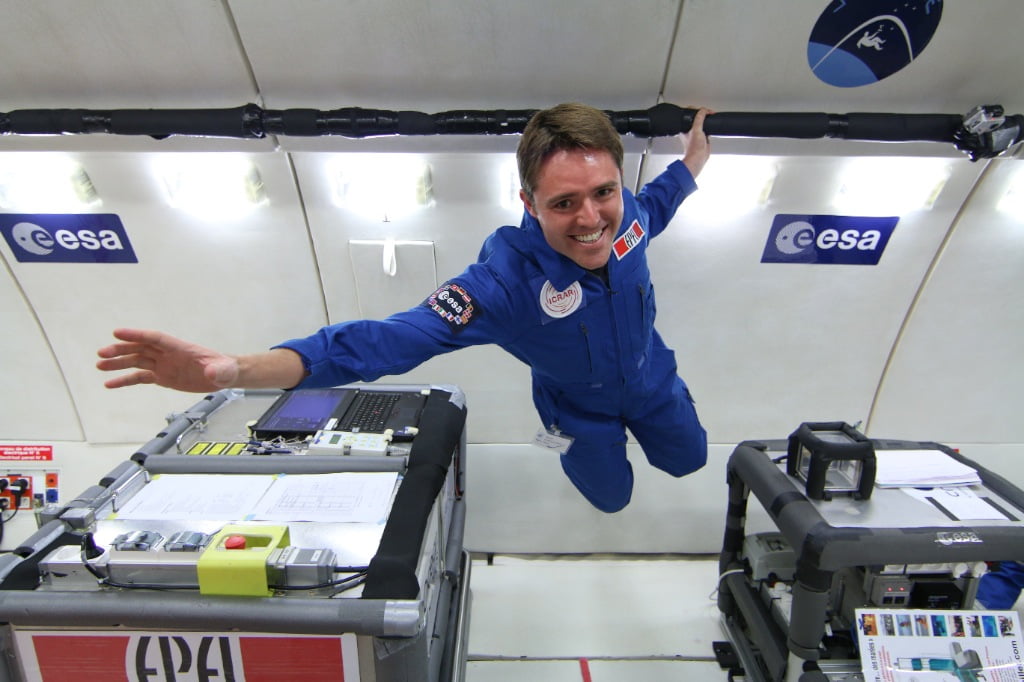With over 20 hours of weightlessness and 17 years of service, ESA’s ‘Zero-G’ Airbus A300 has seen over 450 experiments conducted on board, ranging from working out how humans would walk on Mars, to understanding more about how metal alloys behave without gravity getting involved.
Dr Danail Obreschkow and his colleagues experimented with bubbles on the flights. They were trying to understand how bubbles behave as they collapse in microgravity, the results of which could lead to more durable hydrolics and machines. They’ve nicknamed their project ‘Flash and Splash’ after the lasers that produce the under-water bubbles in their experiment.
The team first started working in microgravity as students when their proposal was selected to fly on the 2005 ‘8th ESA Student Parabolic Flight Campaign’. Those first experiments then led to many more, and the team has now been involved in six campaigns on the Zero-G plane, and will continue with the Airbus A300’s successor in 2015.
As part of the retirement celebrations, ESA have selected ‘Flash and Splash’ as one of the top 5 projects taken aboard the Zero-G plane in it’s long history.
However, bubbles aren’t the only thing Dr Obreschkow and the team experiment with on board; they also manage to conduct hand-eye coordination experiments, Aussie style!
Australian Football on Parabolic Flights


